Since childhood, I’ve been intrigued by plants and have enjoyed observing them as they grow. Until I discovered the Nat’l Wildlife Federation’s Backyard Wildlife Habitat program in the late 1990s, I was most interested in how “pretty” they were.
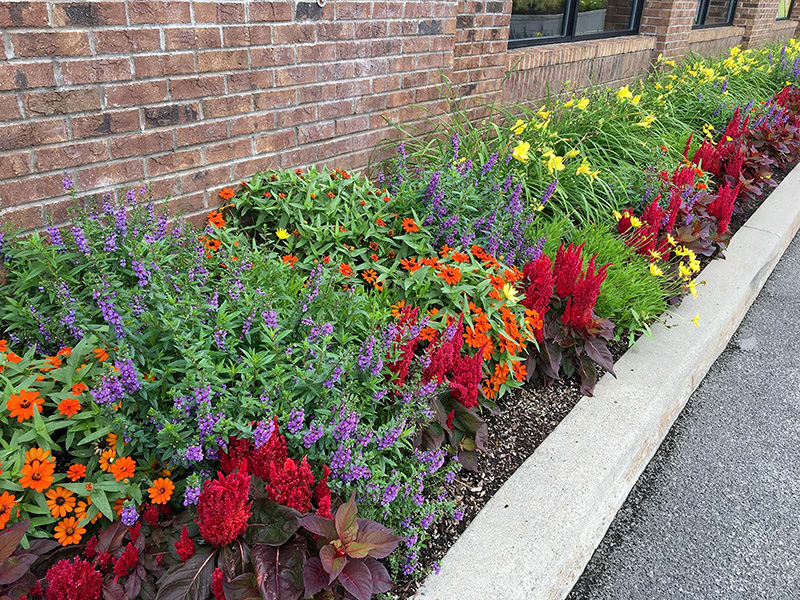
I was not alone in this, of course. Many people enjoy decorating their yards with pretty plants. Even businesses and other institutions decorate their properties with plants.
Typically, as in this store’s landscape, not a one is a native plant, and not one insect was spotted here.
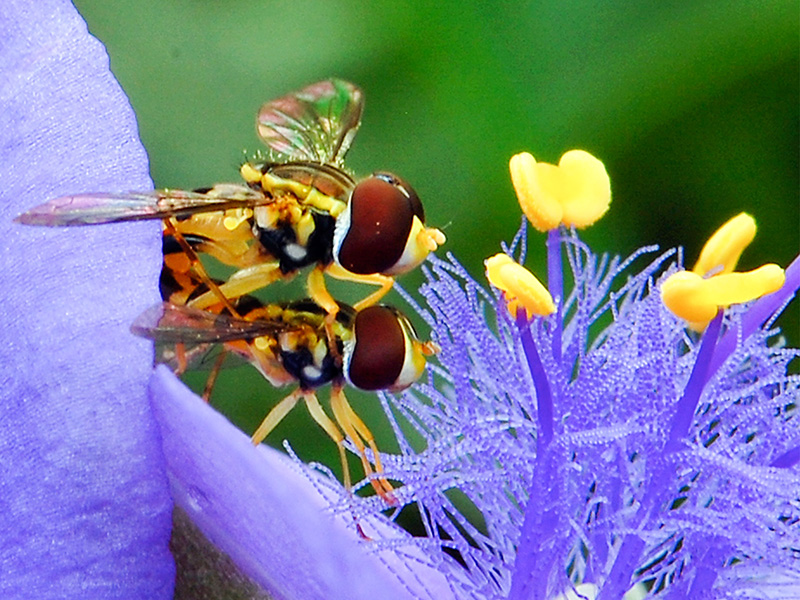
QUICK QUIZ:
What do you see in this image?
Did you focus on the bees … or the flower?
I suppose most of us are also aware of plants being part of nature, but many of us just don’t notice them or know how to identify them. There’s a term for this: plant blindness. And many of us are blind to their fundamental, crucial role in supporting life on earth.
In 1998, U.S. botanists Elisabeth Schussler and James Wandersee defined plant blindness as “the inability to see or notice the plants in one’s own environment,” which leads to “the inability to recognize the importance of plants in the biosphere and in human affairs.”
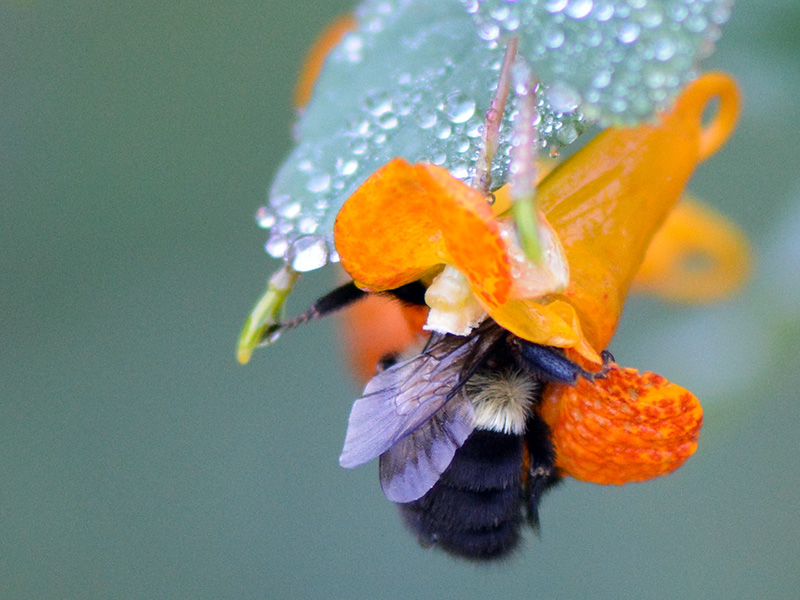
As a habitat gardener, I enjoy watching the creatures our landscape supports, but I increasingly realize that the plants are the foundation of life on earth because they support important creatures such as insects.
And not just any plants, but plants native to their location — in other words, plants in relationship to the soils, other plants, and creatures that belong in the same location because they have spent thousands and thousands of years together.
Growing native plants
Not as much care is needed for native plants, assuming you plant them in conditions they have evolved to grow in. Of course, some plants (for example, lady slippers) aren’t going to thrive in typical home landscapes. The “right plant in the right place” principle still holds for native plants, just as with non-natives.
But I don’t fertilize or water or fuss with them. They either grow or they die, in which case I conclude they weren’t the “right plant” for that place.
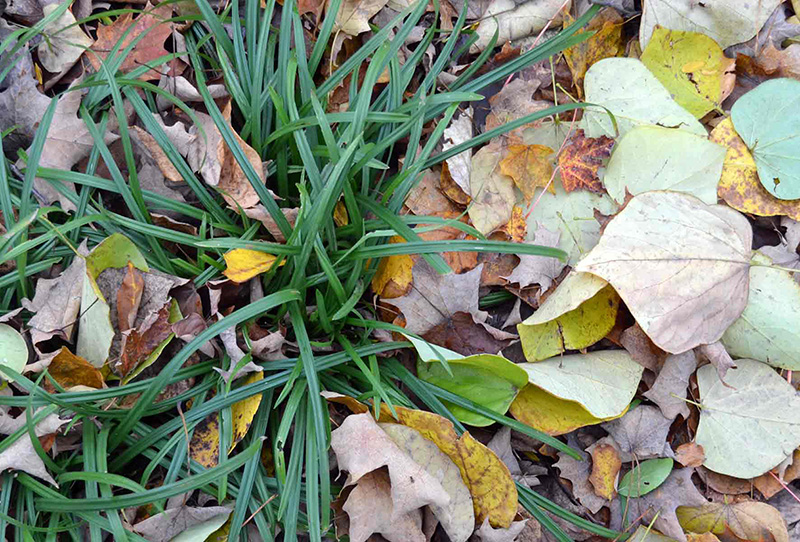
On the other hand, sometimes “benign neglect” is my standard of care.
These sedges are fending for themselves in leaf litter, but they generally make it.
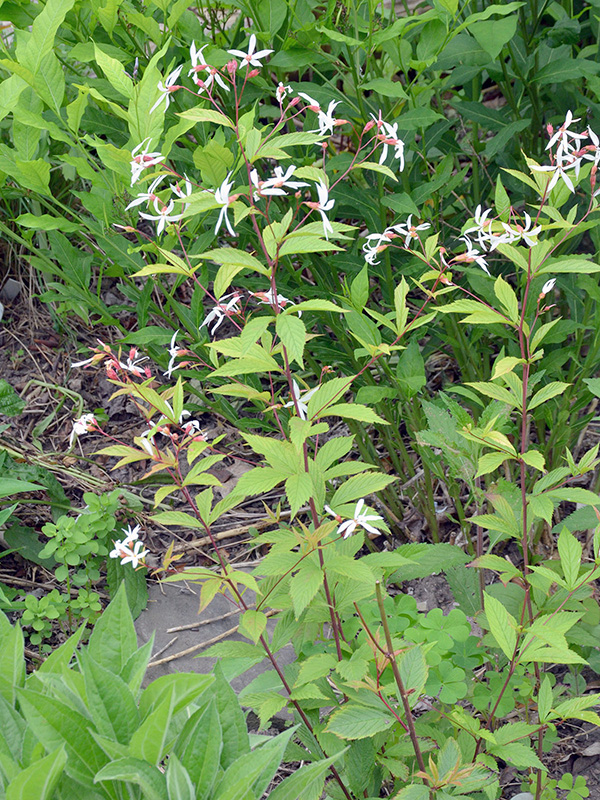
Sometimes I stray into a “not-so-benign-neglect” standard of care.
A few years after buying and planting it, this bowman’s root “disappeared” from my landscape, most likely because I let other plants crowd it out.
NOTE: Benign neglect also doesn’t work so well on recently divided or transplanted plants — not a situation that arises in nature. I try to keep these plants watered and free of encroachment by other plants until they’re established.
Aside from initial planting (and hopefully a bit more “benign” and a bit less “neglect”) the good news is that a three-dimensional natural landscape with lots of plants requires much less work since it doesn’t require perfect plants, straight lines of flowers, regular watering, repeated applications of fertilizer and pesticides, spreading purchased mulch, and so on.
The right plant in the right place
Putting a plant in an appropriate place always makes sense for any plant, native or not.
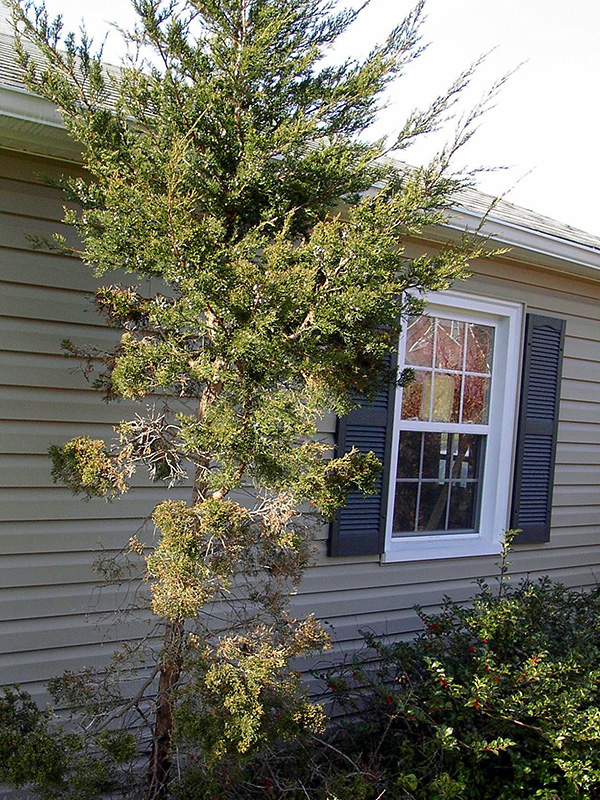
For example, we bought this juniper (Juniperus) of some kind back in the days before I knew the difference in species or kept track of them. We planted it near the garage door on the east side of the house. It got morning sun, but none the rest of the day. Notice how much better the part above the garage roof line is growing — the only part of the plant that got more than a few hours of sun a day. Once it had some sun, it was much happier.
Unfortunately, though, by that time the plant was so weak that one day it just toppled over onto the ground. With nothing to lose, we replanted it even at this fairly mature stage of growth.
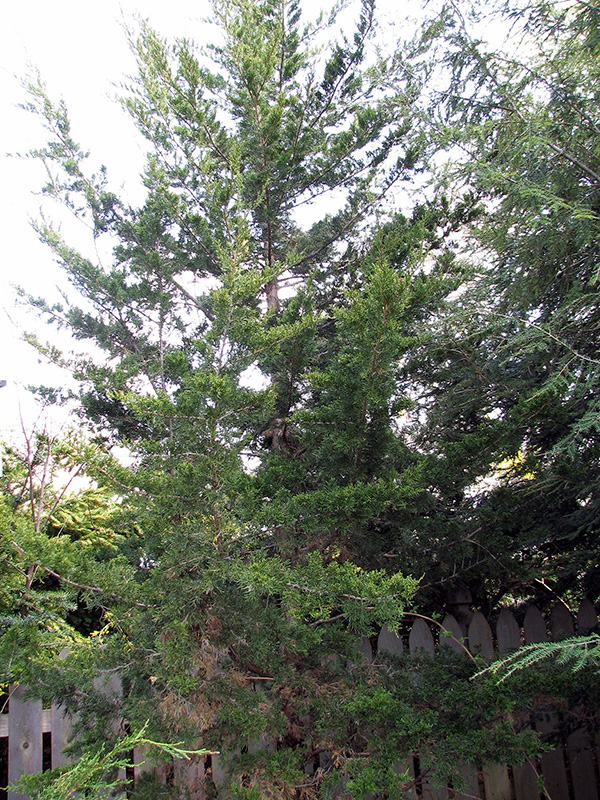
We staked it and tied it to the fence in the back of the yard in a much sunnier location. To our surprise, it took hold and is now twice the size and very robust.
This was a vivid lesson in the need to put the right plant in the right place. If a plant has the right conditions, it will just grow; if it’s in okay conditions, it probably will grow but probably not as robustly. But in the exactly wrong conditions or for fussy plants, it will steadily decline. We try to provide at least okay conditions for plants since ideal conditions in our suburban location aren’t always possible.
EXCEPT … putting particularly “enthusiastic” plants in a location with other than their ideal conditions might keep it in bounds. For example, I had some space for common milkweeds in the shade. They didn’t bloom as they would in the sun, but for monarchs, they still provided leaves and didn’t spread as much.
And some plants will do only okay, but sometimes that’s enough! For example, I put some extra coneflower plants in a rather shady area. They actually bloomed but in a paler pink than their “siblings” in a sunnier area, but they filled a space and were attractive enough. Plus it’s just interesting to experiment to see what plants will do! (I wouldn’t try this with an expensive plant in short supply, though.)
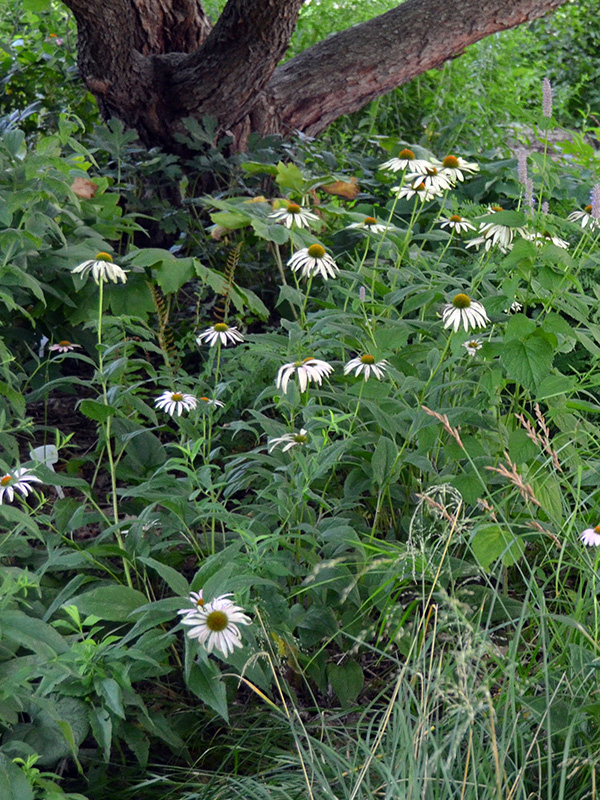
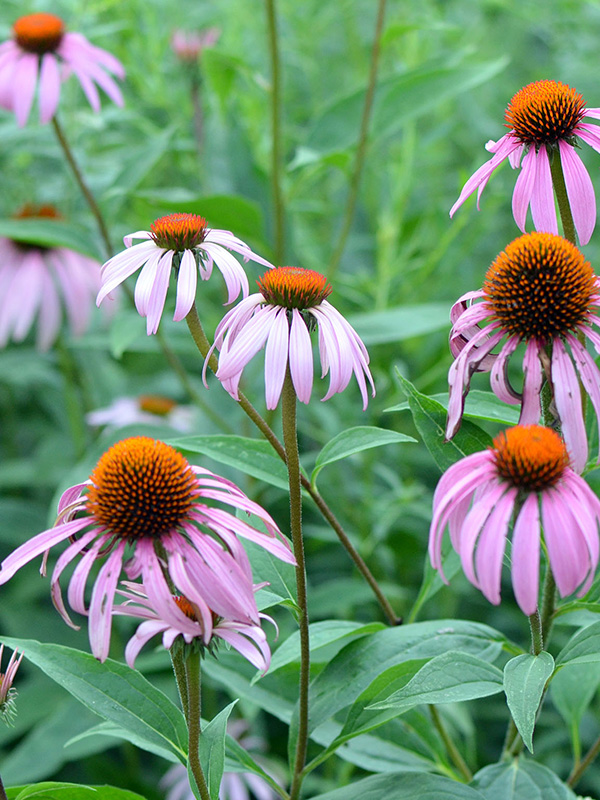
Location can make quite difference! These two marsh marigold plants (photos taken just a few minutes apart) are descended from my original marsh marigold, but they’re growing in two different locations. The plant in the sunnier location had been blooming for a few weeks, but the one in the shaded spot is just getting started.
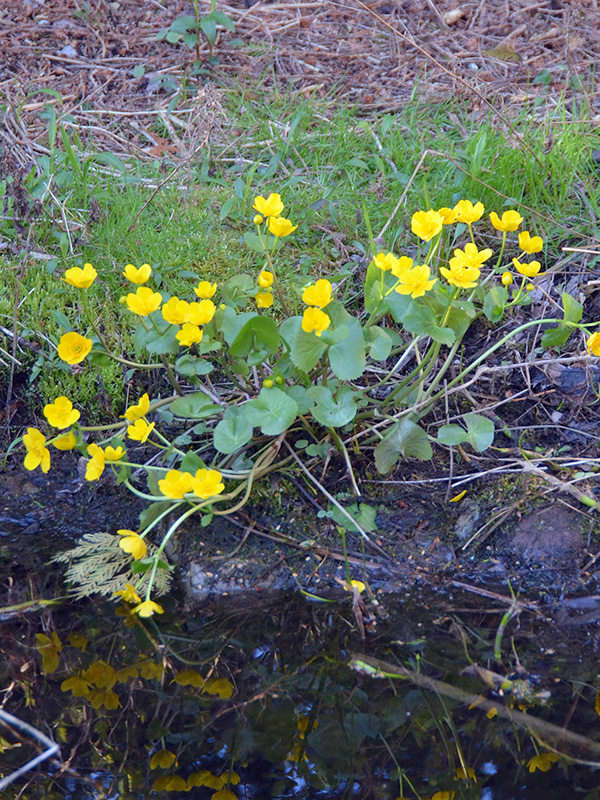
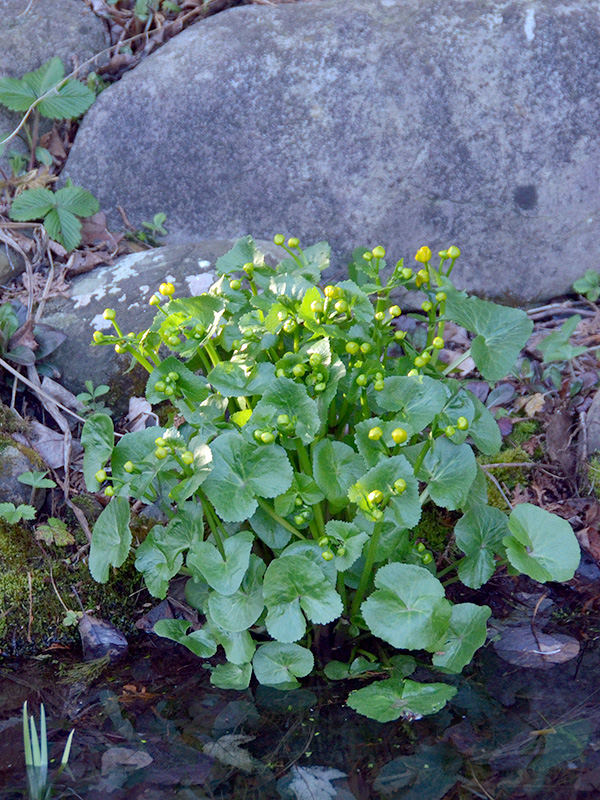
Cutting back and pruning
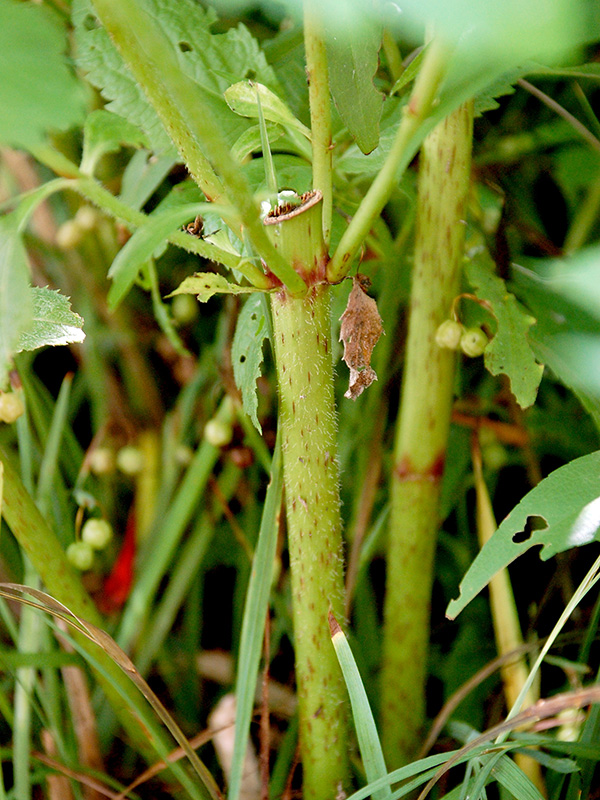
After experimenting a season or two, I’ve concluded that cutting back some of the tallish herbaceous plants in early summer (for us, mid-June) is a good idea. Some of these plants become very tall, taking up a lot of space and looking out of proportion in a small yard.
I’ve found that it has habitat benefits as well. Not only does it create a bushier plant, but it prolongs the season of bloom (assuming some plants are left to grow normally) since it delays their flowering somewhat. I’ve tried this with joe-pye weed, New England aster, and New York ironweed, goldenrods, and others, and they’ve all done very well.
We try to select woody plants that will look good growing in their natural shape. Still, though, while not strictly necessary, we sometimes prune certain plants to keep them looking their best — still in a natural shape, but tidied up a bit.
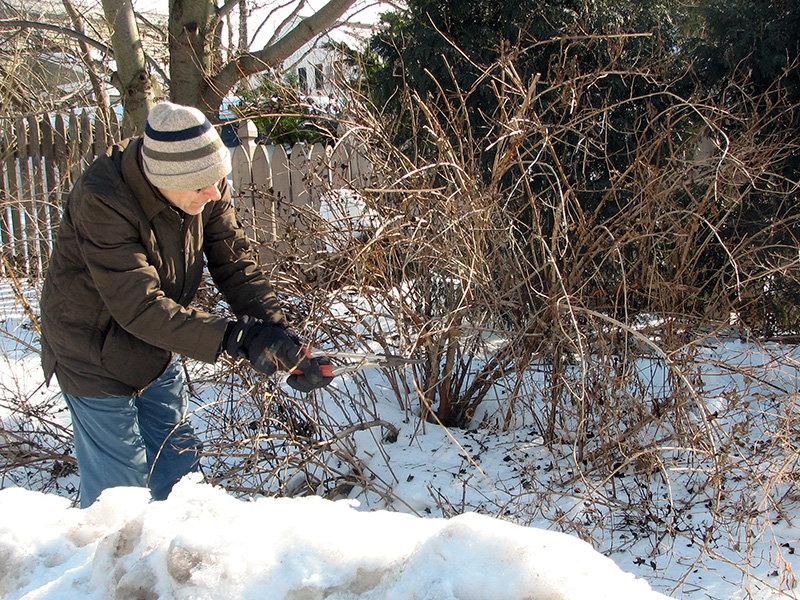
In this case, we’re rejuvenating a ninebark so it will produce more flowers and seeds and will be a little more controlled-looking in our landscape along the roadside.
We have three ninebarks, and so (when we remember) in late winter if we cut back one of the three each year the space is never empty. Theoretically, this would mean that each plant gets cut back every three years, but we rarely remember to do this every year.
UPDATE: These ninebarks didn’t do well and we removed them. We now have silky dogwoods and gray dogwoods growing in this space, as well as herbaceous plants.
Examples of pruning advice for our shrubs
As I explored pruning advice on the web, it was obvious that the goal seems to be aesthetic rather than simply keeping plants healthy and producing food for wildlife. Still, though, there are some common general principles that seem sensible.
Experts recommend that most plants in our area be pruned in late winter or early spring. Another common bit of advice is that you prune one-third of the stems out and cut the remaining stems back a third. Of course, dead and damaged stems can be cut out any time.
We haven’t generally done any extreme “rejuvenation pruning” cutting plants back to the ground. We did, however, have an arborist do this for a serviceberry (Amelanchier canadensis) that had been planted far too close to the house many years ago by an expensive local nursery. (They had planted a hemlock on the other side of the vestibule, but we long ago had removed that.) We’ll be careful to make sure it doesn’t get as tall as before!
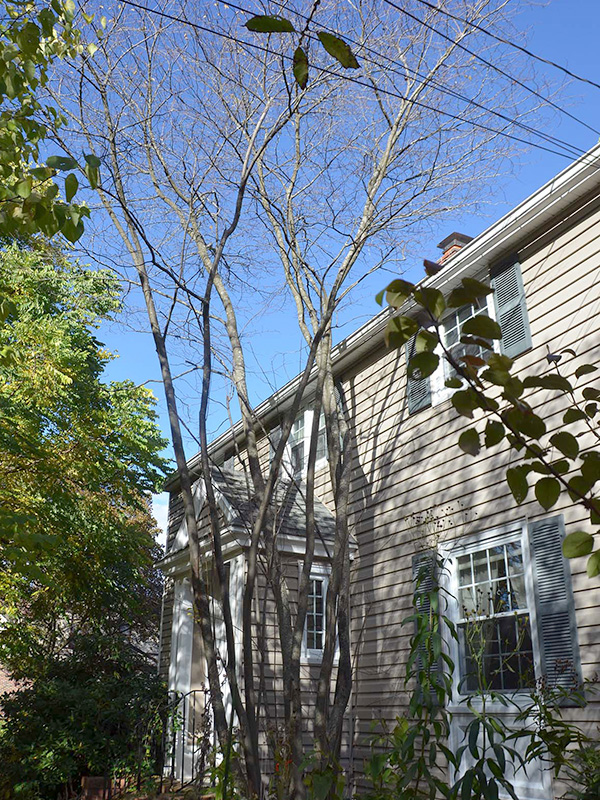
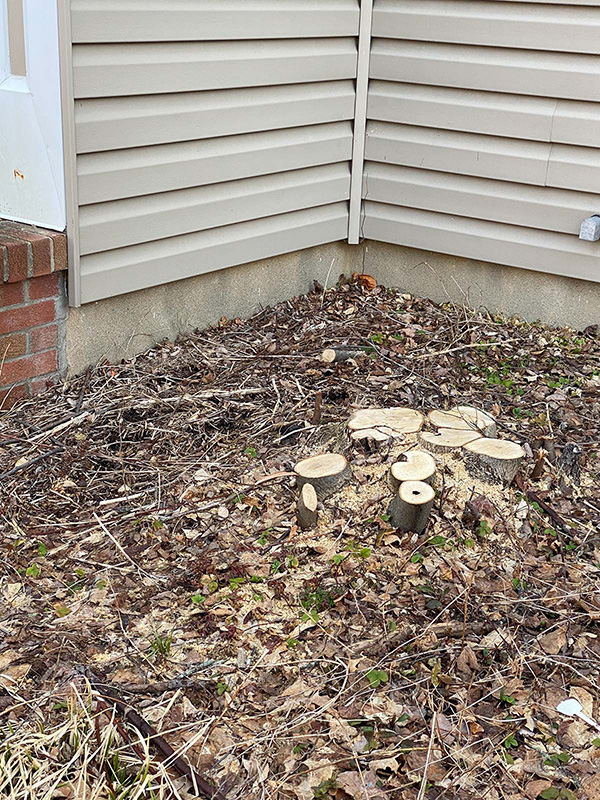
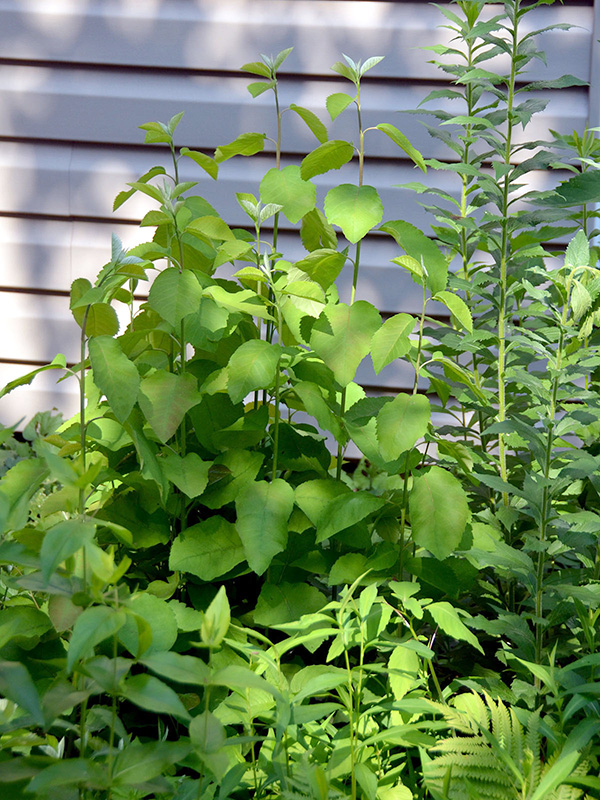
Some additional specific advice for specific plants that we grow
Advice I found on the internet, so we’ll be checking how this additional plant-specific advice works out. The default is pruning in late winter or early spring unless otherwise indicated.
- Winterberry: If you prune in late winter/spring, you’ll be cutting our flower buds; if pruning later, you’ll be cutting out the berries. Therefore some advise not pruning it at all.
- Elderberry: After its second year, prune annually every spring. Cutting out old 3-year-old canes encourages new, more fruitful canes.
- Northern bayberry: Cut back to healthy lateral bud in the spring.
- Clethra: Blooms on new growth, so cut back in winter/early spring just as new growth appears.
- Itea: Prune AFTER they bloom.
- St. John’s wort: Flowers on new growth, so cut back in early spring just before new growth forms.
- Spicebush: Prune in autumn or early spring (or any time it needs it).
- Chokeberry: Prune when 8-10 years old to improve fruit production.
Insect damage
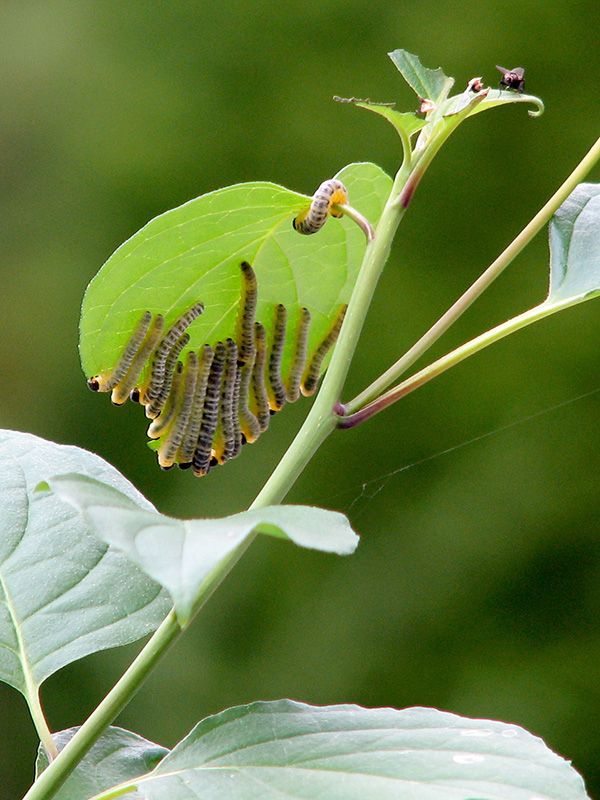
When people know I’m an “earth-friendly” organic gardener, they often ask me what I do about various insect problems. That’s easy to answer. Generally nothing. (We do, though, hand-pick a few invaders, such as the destructive Japanese beetle.) For the most part, though, it never occurs to me to do anything when I see some leaves with holes.
One example, shown in the photo, is the dogwood sawfly. The damage this native insect inflicts doesn’t improve the appearance of the tree, of course, but it doesn’t risk the tree’s health.
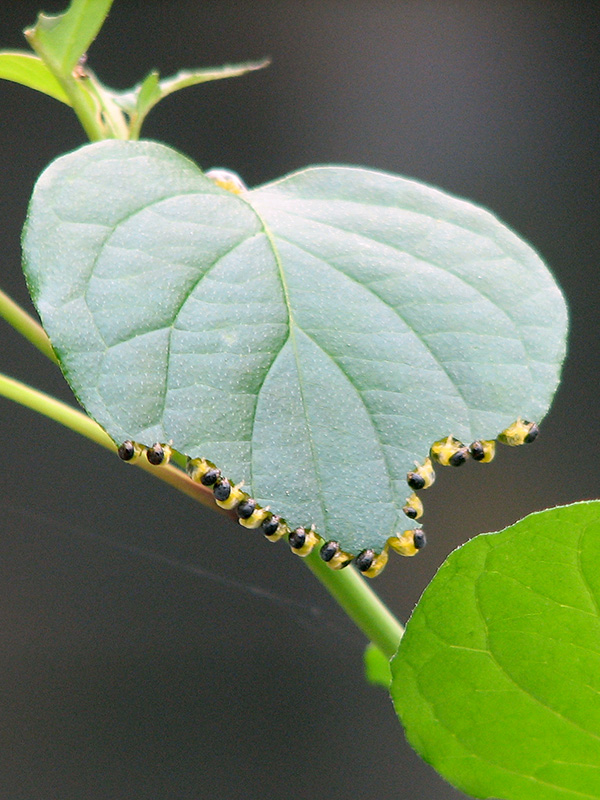
Many poisons are available to “treat” this problem, but if it doesn’t harm the tree, why put all these poisons into the environment?
Sometimes, as in the case of flea beetles, I get annoyed, but what doesn’t kill plants just gives an opportunity for an insect, bird, amphibian, or other predator to have a feast. Over all, there’s very little leaf damage to my garden and everything looks very healthy. Who cares about a little leaf damage to individual plants?
(NOTE: Non-native predators, of course, are a different story, since plants haven’t evolved defenses against them.)
Resources
- Homegrown National Park:
- VIDEO: How do keystone plants regenerate biodiversity? – short video by Doug Tallamy
- Restoring the Landscape with Native Plants:
- Caterpillars and their look-alikes – Heather Holm, author of Bees and other books
- Plant blindness – In 1998, U.S. botanists Elisabeth Schussler and James Wandersee defined plant blindness as “the inability to see or notice the plants in one’s own environment,” which leads to “the inability to recognize the importance of plants in the biosphere and in human affairs.” Because of plant blindness, people tend to rank animals as superior to plants, so conservation efforts for plants tends to be limited. – Read more about plant blindness
- Humane Gardener:
Reflections
I own the land. How strange a notion! The perception of ownership isn’t shared by any of the creatures who live on the land, or from it, or cross over it. I own the plants, but not the relationship by which their roots are nourished, or their flowers pollinated, or their seeds dispersed. I own the dirt, but not the living systems that maintain it. Yet ownership gives me license to harm all these things that don’t belong to me. … Conservation departments, nature preserves, the very law of the land, can’t protect your lot or mine. It’s up to us to do it of our own free will because we understand that the land is not our own but only in our keeping.
~ Sara Stein, Planting Noah’s Garden, pp. 16-17
I did not find the world desolate when I entered it. My fathers planted for me before I arrived, so I plant for those who come after me.
~ The Talmud
